Question
Need help on drawing rectangles in code and needs to pass given tests Code needs to be written where it says YOUR CODE HERE def
Need help on drawing rectangles in code and needs to pass given tests
Code needs to be written where it says "YOUR CODE HERE"
def rectangle_eq(self, other):
### YOUR CODE HERE
Rectangle.__eq__ = rectangle_eq
# 5 points: tests for rectangle equality.
assert Rectangle((2, 3), (4, 5)) == Rectangle((2, 3), (4, 5))
assert Rectangle((2, 3), (4, 5)) != Rectangle((4, 5), (2, 3))
assert Rectangle((2, 3), (4, 5)) != Rectangle((2, 3), (4, 5), (6, 7))
### Rectangle intersection
def rectangle_and(self, other):
if self.ndims != other.ndims:
raise TypeError("The rectangles have different dimensions: {} and {}".format(
self.ndims, other.ndims
))
# Challenge: can you write this as a one-liner shorter than this comment is?
# There are no bonus points, note. Just for the fun.
### YOUR CODE HERE
Rectangle.__and__ = rectangle_and
# 10 points: tests for rectangle intersection.
r1 = Rectangle((2, 3), (0, 4))
r2 = Rectangle((0, 4), (1, 3))
assert r1 & r2 == Rectangle((2, 3), (1, 3))
r1 = Rectangle((2, 3), (0, 4))
r2 = Rectangle((0, 4), (1, 5))
assert r1 & r2 == Rectangle((2, 3), (1, 4))
r1 = Rectangle((-1, 5), (0, 6))
r2 = Rectangle((0, 4), (-1, 3))
assert r1 & r2 == Rectangle((0, 4), (0, 3))
r1 = Rectangle((2, 6), (0, 4))
r2 = Rectangle((0, 6), (0, 3))
assert r1 & r2 == Rectangle((2, 6), (0, 3))
### Membership of a point in a rectangle.
def rectangle_contains(self, p):
# The point is a tuple with one element per dimension of the rectangle.
if len(p) != self.ndims:
raise TypeError()
### YOUR CODE HERE
Rectangle.__contains__ = rectangle_contains
# 5 points: tests for membership.
assert (2, 3) in Rectangle((0, 4), (1, 5))
assert (0, 4) in Rectangle((0, 4), (4, 5))
assert (4, 5) in Rectangle((0, 4), (4, 5))
assert (0, 0, 0) not in Rectangle((3, 4), (0, 3), (0, 8))
### Membership of a point in a region
def region_contains(self, p):
### YOUR CODE HERE
Region.__contains__ = region_contains
assert (2, 1) in Region(Rectangle((0, 2), (0, 3)),
Rectangle((4, 6), (5, 8)))
assert (2, 1) not in Region(Rectangle((0, 1), (0, 3)),
Rectangle((4, 6), (5, 8)))
### Compute the bounding box of a region
def region_bounding_box(self):
"""Returns the bounding box of the region, as a rectangle.
This returns None if the region does not contain any rectangle."""
if len(self.rectangles) == 0:
return None
### YOUR CODE HERE
Region.bounding_box = property(region_bounding_box)
# 10 points: tests for bounding boxes
reg = Region(Rectangle((0, 2), (1, 3)), Rectangle((4, 6), (5, 8)))
assert reg.bounding_box == Rectangle((0, 6), (1, 8))
reg = Region(
Rectangle((0, 5), (4, 5), (1, 9)),
Rectangle((4, 20), (-2, 3), (4, 21)),
Rectangle((7, 99), (3, 7), (2, 3))
)
assert reg.bounding_box == Rectangle((0, 99), (-2, 7), (1, 21))
### Random point of a rectangle
def rectangle_random_point(self):
### YOUR CODE HERE
Rectangle.random_point = rectangle_random_point
# 3 points: random point of a rectangle.
r = Rectangle((0, 2), (1, 3))
for i in range(5):
p = r.random_point()
assert isinstance(p, tuple)
assert len(p) == 2
assert p in r
print(p)
# 3 points: random point of a rectangle.
import numpy as np
r = Rectangle((1, 2), (1, 6))
xs, ys = [], []
for _ in range(10000):
p = r.random_point()
assert p in r
xs.append(p[0])
ys.append(p[1])
assert np.std(xs) * 4.9
### Monte carlo Volume
def region_montecarlo_volume(self, n=1000):
"""Computes the volume of a region, using Monte Carlo approximation
with n samples."""
# The solution, written without any particular trick, takes 7 lines.
# If you write a much longer solution, you are on the wrong track.
### YOUR CODE HERE
Region.montecarlo_volume = region_montecarlo_volume
# 10 points: Volume via Monte Carlo
reg = Region(Rectangle((0, 1), (0, 4)), Rectangle((0, 4), (0, 1)))
reg.draw()
print(" 10 samples:", reg.montecarlo_volume(n=10))
print(" 100 samples:", reg.montecarlo_volume(n=100))
print(" 1000 samples:", reg.montecarlo_volume(n=1000))
print("10000 samples:", reg.montecarlo_volume(n=10000))
v = reg.montecarlo_volume(n=10000)
assert 6.2
### Monte Carlo difference and equality between regions
def region_montecarlo_difference(self, other, n=1000):
"""Checks whether a region self is different from a region other, using
a Monte Carlo method with n samples. It returns either a point p that
witnesses the difference of the regions, or None, if no such point is found."""
# This can be done without hurry in 6 lines of code.
### YOUR CODE HERE
Region.montecarlo_difference = region_montecarlo_difference
def region_montecarlo_equality(self, other, n=1000):
return self.montecarlo_difference(other, n=n) is None
Region.montecarlo_equality = region_montecarlo_equality
# 10 points: Equality of regions via Monte Carlo.
reg1 = Region(Rectangle((0, 4), (0, 2)), Rectangle((1, 2), (0, 4)), name="reg1")
reg2 = Region(Rectangle((0, 4), (0, 2)), Rectangle((1, 2), (1, 4)), name="reg2")
reg3 = Region(Rectangle((0, 4), (0, 2)), Rectangle((1, 2), (0, 3)), name="reg3")
assert reg1.montecarlo_equality(reg2)
assert not reg1.montecarlo_equality(reg3)

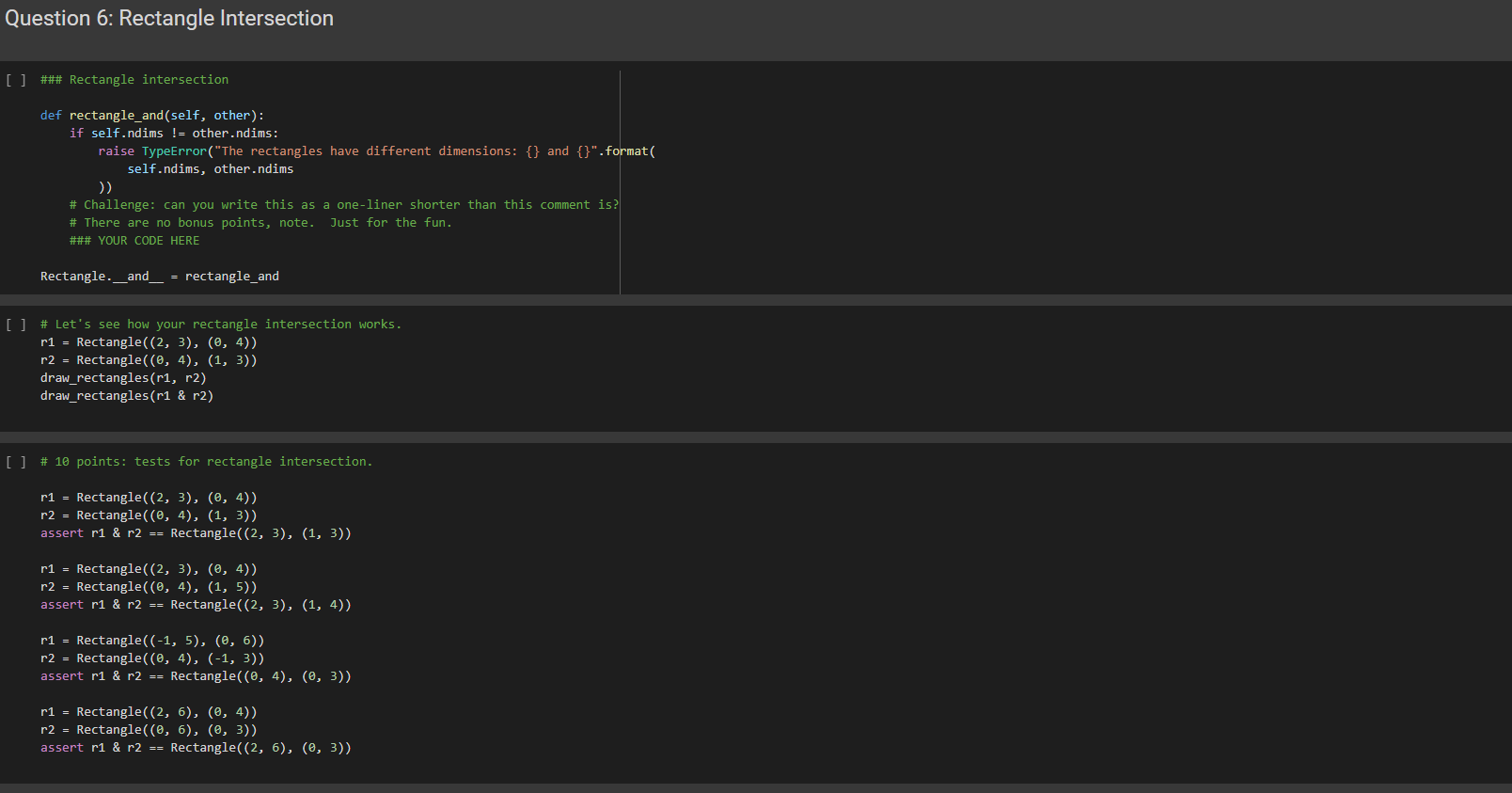
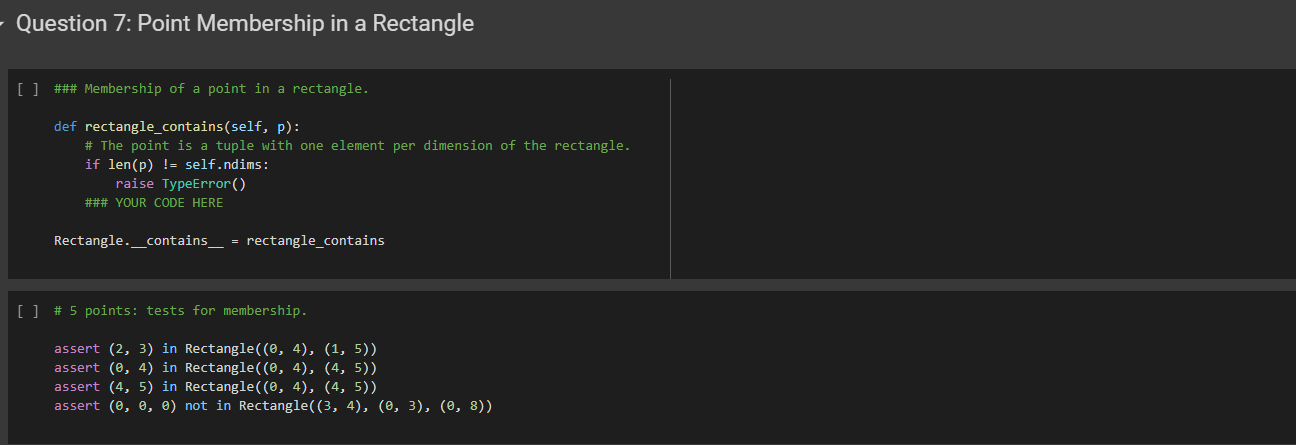
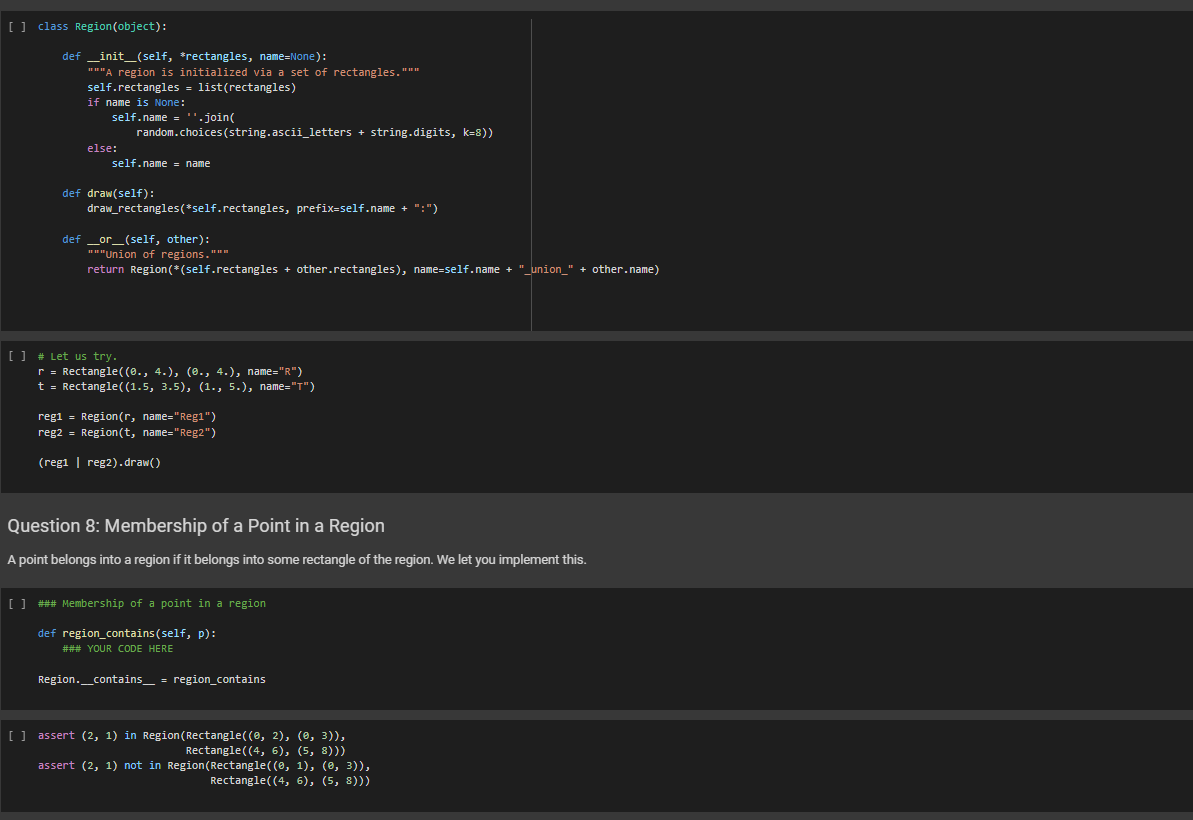
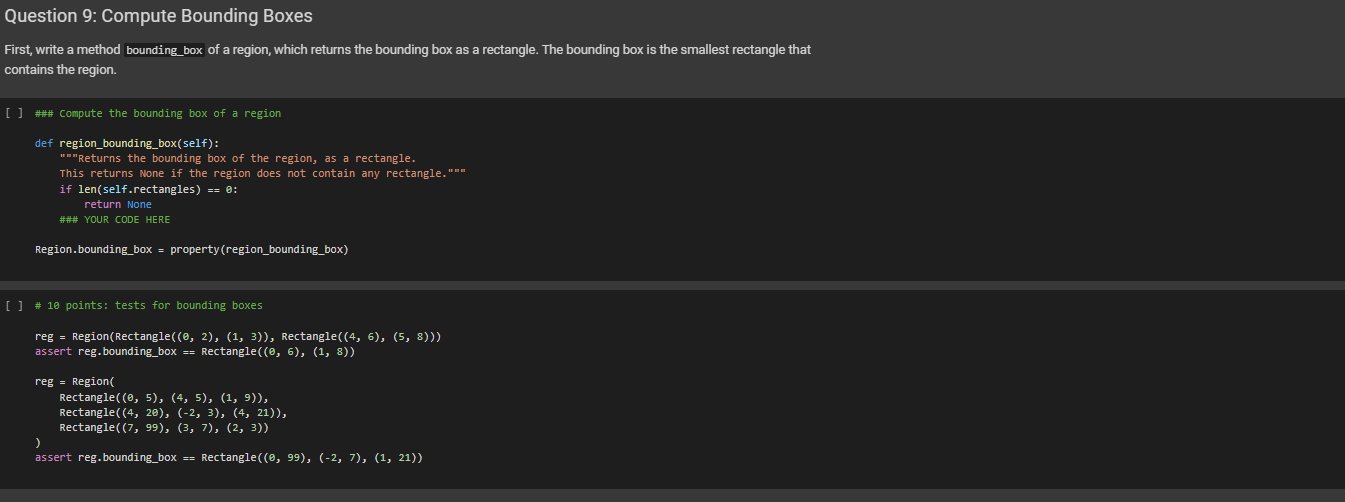
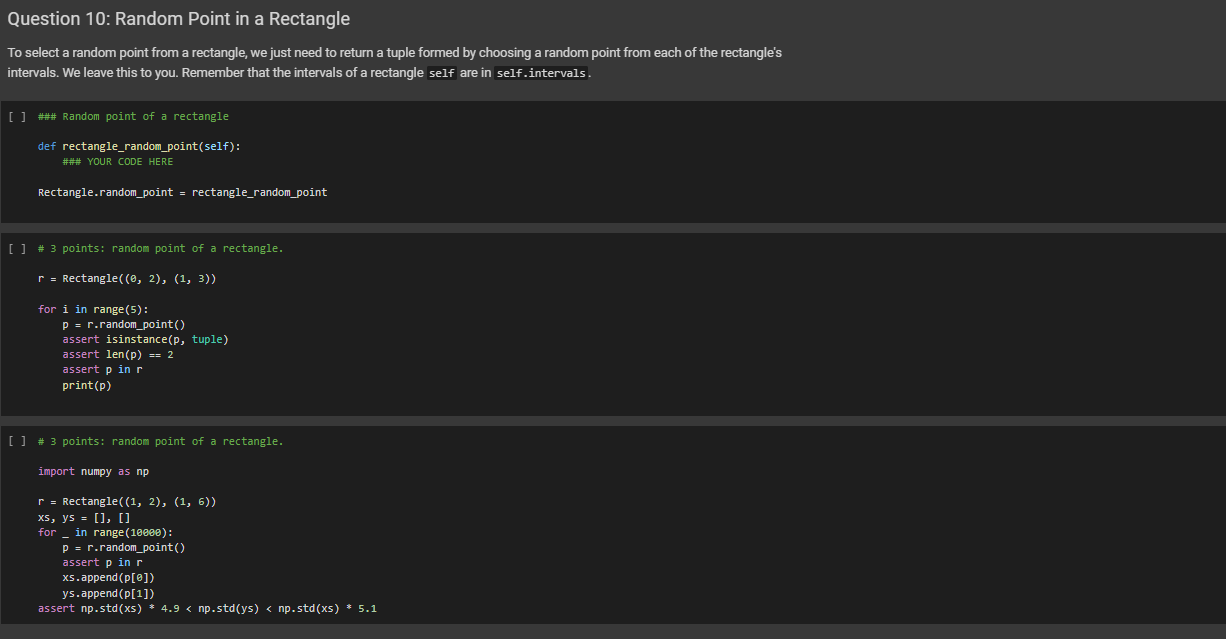


Step by Step Solution
There are 3 Steps involved in it
Step: 1

Get Instant Access to Expert-Tailored Solutions
See step-by-step solutions with expert insights and AI powered tools for academic success
Step: 2

Step: 3

Ace Your Homework with AI
Get the answers you need in no time with our AI-driven, step-by-step assistance
Get Started


